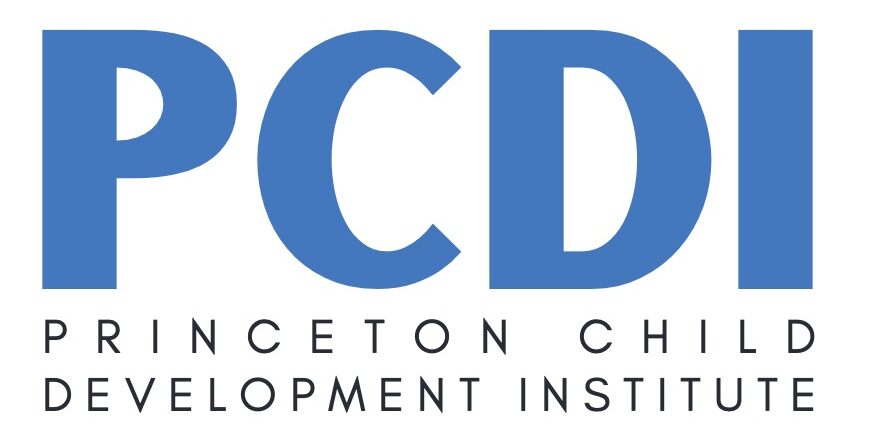
The Scientist Practitioner Model
PCDI applies a scientist practitioner model. This promotes a bidirectional relationship between research and practice. Clinical work inspires research, and research improves clinical outcomes (Dorsey & Harper, 2018).
Several lines of research have been developed at PCDI including the use of scripts and script-fading procedures and activity schedules. Published research has also examined the use of incidental teaching, gestural communication, parent training, systems analysis, and a wide array of other behavior analytic procedures.
PCDI employs the science of behavior analysis at every level of the organization. This program-wide use of behavior analysis ensures positive change among program administrators, trainers, instructors, parents, and students.
PCDI’s longstanding commitment to research development and dissemination not only benefits the students we serve directly, but individuals with autism around the world.
Our published research library is available using the links below.
Recent Publications
Princeton Child Development Institute
In S.Peterson, R. Eldridge, B.F. Williams, and R.L. Williams. (Eds.) Ethical Applied Behavior Analysis Models for Individuals Impacted by Autism (pp. 329-344).
Freeman, A.S., MacDuff, G.S., & Fry. C.M. (2024)
Effects of Script-Fading on Social Initiations
During Discrete-Trial Teaching with Children with Autism
Freeman, A.S., Reeve, S.A., MacDuff, G.S. et al. (2024)
Alliance for Scientific Autism Intervention:
System Components and Outcome Data from a High-Quality Service Delivery Organization
Townsend, D.B., Brothers, K.J., MacDuff, G.S. et al. (2023)
Systems and Outcomes
Krantz, P.J., & Risley, T.R. (1977). Behavioral ecology in the classroom. In D. K. O’Leary & S.G. O’Leary (Eds.), Classroom management: The successful use of behavior modification (Revised ed.), pp. 349-366. NY: Pergamon Press.
McClannahan, L.E. (1983). Comprehensive intervention for autistic youth: The Princeton Child Development Institute. Division 25 Recorder, 18, 11-14.
Krantz, P.J., & McGee, G.G. (1983). Review of how to create a curriculum for autistic and other handicapped children. The Behavior Therapist, 6, 113-114.
Fenske, E.C., Zalenski, S., Krantz, P.J. & McClannahan, L.E. (1985). Age at intervention and treatment outcome for autistic children in a comprehensive intervention program. Analysis and Intervention in Developmental Disabilities, 5, 49-58.
— Reprinted in J.S. Bailey, G.L. Shook, B.A. Iwata, D.H.Reid, & A.C. Repp (1986). Behavior analysis in developmental disabilities 1968-1985. Reprint Series, Volume 1. Lawrence, KS: Journal of Applied Behavior Analysis.
— Reviewed in Simeonsson, R. J., Olley, J. G., & Rosenthal, S. L. (1987). Early intervention for children with autism. In M. J. Guaralnick & F. C. Bennett (Eds.), The effectiveness of early intervention for at-risk and handicapped children. New York: Harcourt Brace Jovanovich.
Brothers, K. J., Krantz, P. J., & McClannahan, L. E. (1994). Office paper recycling: A function of container proximity. Journal of Applied Behavior Analysis, 27, 153-160.
McClannahan, L. E., & Krantz, P. J. (1994). On systems analysis in autism intervention programs. Journal of Applied Behavior Analysis, 26, 589-596.
McClannahan, L. E., & Krantz, P. J. (1997). Princeton Child Development Institute. Behavior and Social Issues, 7, 65-68.
Krantz, P. J. (2000). Commentary: Interventions to facilitate socialization. Journal of Autism and Developmental Disorders, 30, 411-413.
McClannahan L. E., Krantz P. J. (2001). Behavior analysis and intervention for preschoolers at the Princeton Child Development Institute. In Handleman J. S., Harris S. L. (Eds.), Preschool education programs for children with autism (2nd ed., pp. 191–213). Pro-ed.
Pelios, L.V., MacDuff, G. S., & Axelrod, S. (2003). The effects of a treatment package in establishing independent academic work skills in children with autism. Education & Treatment of Children, 26, 1-21.
McClannahan, L. E., & Krantz, P. J. (2004). Some guidelines for evaluating behavioral intervention programs for children with autism. In H. E. Briggs (Ed.), Evidence-based social work practice (pp. 92-103). Chicago: Lyceum Books.
McClannahan, L. E., & Krantz, P. J. (2006). Behavior analysis and intervention for school-age children at the Princeton Child Development Institute. In J. S. Handleman and S. L. Harris (Eds.). School-Age Education Programs for Children with Autism (pp. 143-161).
Roane, H. S., Fisher, W. W., Green, G., McClannahan, L. E., & Taylor, B. A., Eds. (2010). Behavior analysis in autism: A compilation of studies from the Journal of Applied Behavior Analysis (1968-2009). Lawrence, KS: Society for the Experimental Analysis of Behavior.
Townsend, D.B., Brothers, K.J., MacDuff, G.S. et al. (2023). Alliance for Scientific Autism Intervention: System Components and Outcome Data from High-Quality Service Delivery Organizations. Behavior Analysis in Practice.
Freeman, A. S., MacDuff, G. S., & Fry, C.M. (2024). Princeton Child Development Institute. In S.Peterson, R. Eldridge, B.F. Williams, and R.L. Williams. (Eds.) Ethical Applied Behavior Analysis Models for Individuals Impacted by Autism (pp. 329-344). Routledge.
Disability Rights
McClannahan, L.E., & Krantz, P.J. (1981). Accountability systems for protection of the rights of autistic children and youth. In G.T. Hannah, W.P. Christian and H.B. Clark (Eds.), Preservation of client rights: A handbook for practitioners providing therapeutic, educational, and rehabilitative services, (pp. 83-106). NY: Free Press.
McClannahan, L.E. & Krantz, P.J. (1985). Some next steps in rights protection for the developmentally disabled. School Psychology Review, 14, 143-149.
Weiss, M. (1988). Protection of Clients' Rights to Confidentiality. Spectrum, 2, 2-3.
McClannahan, L. E., McGee, G. G., MacDuff, G. S., & Krantz, P. J. (1990). Assessing and improving child care: A personal appearance index for children with autism. Journal of Applied Behavior Analysis, 23, 149-210.
Krantz, P. J. (1997). Segregated education, integrated education, social movements, and science. In E. Tafa (Ed.), Inclusive education for children with learning and behavioral problems. Athens: Ellinika Grammata
Activity Schedules
MacDuff, G. S., Krantz, P.J., & McClannahan, L. E. (1993). Teaching children with autism to use photographic activity schedules: Maintenance and generalization of complex response chains. Journal of Applied Behavior Analysis, 26, 89-95.
Krantz, P. J., MacDuff, M. T., & McClannahan, L. E. (1993). Programming participation in family activities for children with autism: Parents’ use of photographic activity schedules. Journal of Applied Behavior Analysis, 26, 137-139.
Hall, L. J., McClannahan, L. E., and Krantz, P. J. (1995). Promoting independence in integrated classrooms by teaching aides to use activity schedules and decreased prompts. Education and training in mental retardation and developmental disabilities, September, 208-217.
McClannahan, L. E., & Krantz, P. J. (1997). In search of solutions to prompt dependence: Teaching children with autism to use photographic activity schedules. In E. M. Pinkston and D. M. Baer (Eds.), Environment and behavior (pp. 271-278). Boulder, CO: Westview Press.
McClannahan, L. E., MacDuff, G. S., & Krantz, P. J. (2009). Activity schedules for adults with autism spectrum disorders. In P. Reed (Ed.), Behavioral Theories and Interventions for Autism (pp.313-334). New York: Nova Science Publishers.
McClannahan, L. E., & Krantz, P. J. (2010). Activity schedules for children with autism: Teaching Independent behavior (2nd ed.). Bethesda, MD: Woodbine House.
— Reviewed by Bennett, Amanda E. MD, MPH. Activity Schedules for Children with Autism: Teaching Independent Behavior. Journal of Developmental & Behavioral Pediatrics 32(7):p 511, September 2011.
Krantz, P. J., & McClannahan, L. E. (2014). Picture activity schedules. In P. Sturmey, J. Tarbox, D. Dixon, & J. Matson (Eds.), Handbook of Early Intervention for Autism Spectrum Disorders: Research, Practice, and Policy. New York: Springer Publishing Co.
Freeman, A.S., Fry, C.M., MacDuff, G.S. (2022). Activity Schedules and Script-Fading Procedures: Key Curricula for Teaching People with Autism Independence and Social Interaction Skills. In: Leaf, J.B., Cihon, J.H., Ferguson, J.L., Weiss, M.J. (eds) Handbook of Applied Behavior Analysis Interventions for Autism. Autism and Child Psychopathology Series. Springer, Cham.
Language Acquisition
Scripts and Script-Fading
Krantz, P.J., Zalenski, S., Hall, L.J., Fenske, E.C., & McClannahan, L. (1981). Teaching complex language to autistic children. Analysis and Intervention in Developmental Disabilities, 1, 259-297.
McGee, G.G., Krantz, P.J., & McClannahan, L.E. (1984). Conversational skills for autistic adolescents: Teaching assertiveness in naturalistic game settings. Journal of Autism and Developmental Disorders, 14, 319-330.
Krantz, P. J., & McClannahan, L. E. (1993). Teaching children with autism to initiate to peers: Effects of a script-fading procedure. Journal of Applied Behavior Analysis, 26, 121-132.
Krantz, P. J. & McClannahan, L. E. (1998). Social interaction skills for children with autism: A script-fading procedure for beginning readers. Journal of Applied Behavior Analysis, 31, 191-202.
Stevenson, C. L., Krantz, P. J., & McClannahan, L. E. (2000). Social interaction skills for children with autism: A script-fading procedure for nonreaders. Behavioral Interventions, 15, 1-20.
McClannahan, L. E., & Krantz, P. J. (2005). Teaching conversation to children with autism: Scripts and script fading. Bethesda, MD: Woodbine House.
MacDuff, J. L., Ledo, R., Krantz, P. J. & McClannahan, L. E. (2007). Using script and script-fading procedures to promote bids for joint attention by young children with autism. Research in Autism Spectrum Disorders, 1, 281-290.
Brown, J. L., Krantz, P. J., McClannahan, L. E., & Poulson, C. L. (2008). Using script fading to promote natural environment stimulus control of verbal interactions among youths with autism. Research in Autism Spectrum Disorders, 2, 480-497.
, , , , & (2024). Effects of script-fading on social initiations during discrete-trial teaching with children with autism. Behavioral Interventions.
Incidental Teaching
McGee, G.G., Krantz, P.J., Mason, D. & McClannahan, L.E. (1983). A modified incidental-teaching procedure for autistic youth: Acquisition and generalization of receptive object labels. Journal of Applied Behavior Analysis, 16, 329-338.
McGee, G.G., Krantz, P.J. & McClannahan, L.E. (1985). The facilitative effects of incidental teaching on preposition use by autistic children. Journal of Applied Behavior Analysis, 18, 17-31.
McGee, G.G., Krantz, P.J., & McClannahan, L.E. (1986). An extension of incidental teaching procedures to reading instruction for autistic children. Journal of Applied Behavior Analysis, 19, 147-157.
MacDuff, G.S., Krantz, P.J., MacDuff, M.A., & McClannahan, L.E. (1988). Providing incidental teaching for autistic children: A rapid training procedure for therapists. Education and Treatment of Children, 11, 205-217.
Fenske, E. C., Krantz, P. J., & McClannahan, L. E. (2001). Incidental teaching: A not-discrete-trial teaching procedure. In C. Maurice, G. Green, & R. M. Foxx (Eds.), Making a difference: Behavioral intervention for autism (pp. 75-82). Austin, TX: Pro-ed.
Inclusion
Hall, L. J., McClannahan, L. E., and Krantz, P. J. (1995). Promoting independence in integrated classrooms by teaching aides to use activity schedules and decreased prompts. Education and training in mental retardation and developmental disabilities, September, 208-217.
McClannahan, L. E. (1997). Strategies for integration: Building repertoires that support co-education for children with autism. In E. Tafa (Ed.), Inclusive education for children with learning and behavioral problems. Athens: Ellinika Grammata.
Krantz, P. J. & McClannahan, L. E. (1999). Strategies for integration: Building repertoires that support transitions to public schools. In P. M. Ghezzi, W. L. Williams, & J. E. Carr (Eds.), Autism: Behavior- analytic perspectives (pp. 221-231). Reno, NV: Context Press.
Fenske, Edward (2016). Is Inclusive Education Right for My Child with Disabilities?
Hands-On Training and Mentorship
MacDuff, G.S. (1982). Burnout. Teaching-Family Newsletter, 8, 10-11.
McClannahan, L.E., Krantz, P.J., & McGee, G.G. (1982). Parents as therapists for autistic children: A model for effective parent training. Analysis and Intervention in Developmental Disabilities, 2, 223-252
MacDuff, G. S. (1987). Hands-on training: A key issue in program quality. Spectrum, 1, 3, 8.
Krantz, P. J. (1993). Developing expertise for tomorrow: Mentoring young researchers in clinical settings. In N. J. Minghetti, J. A. Cooper, H. Goldstein, L. B. Olswang, & S. F. Warren (Eds.), Research mentorship and training in communication sciences and disorders Rockville, MD: American Speech-Language-Hearing Foundation.
Adults with Autism and Residential Programming
McClannahan, L.E., & Krantz, P.J. (1979). Family Focus: Extending the Model to the autistic. Teaching-Family Newsletter, 4, 1-2.
McClannahan, L.E., Krantz, P.J., McGee, G.G., & MacDuff, G.S. (1984). Teaching-Family Model for autistic children. In W.P. Christian, G.T. Hannah, & T.J. Glahn (Eds.), Programming effective human services: Strategies for institutional change and client transition, (pp. 383-406). NY: Plenum.
McClannahan, L. E., Bailey, J. G., MacDuff, G. S., MacDuff, M. A., Tyburczy, M. J., & Krantz, P. J. (1988). Facilitating community acceptance of group homes. In M. D. Powers, (Ed.), Severe developmental disabilities: Expanded systems of interaction (pp. 113-135). New York: Paul H. Brookes.
McClannahan, L. E., & Krantz, P. J. (1990). Current issues in the behavioral treatment of adults with autism: Blending research and practice. The Behavior Therapist, 13, 151-154.
McClannahan, L. E., MacDuff, G. S., & Krantz, P. J. (2002). Behavior analysis and intervention for adults with autism. Behavior Modification, 26, 9-26.
McClannahan, L. E., MacDuff, G. S., & Krantz, P. J. (2009). Activity schedules for adults with autism spectrum disorders. In P. Reed (Ed.), Behavioral Theories and Interventions for Autism (pp.313-334). New York: Nova Science Publishers.
Other Teaching Procedures
Krantz, P. J., Ramsland, S. E., & McClannahan, L. E. (1989). Conversational skills for autistic adolescents: An autistic peer as prompter. Behavioral Residential Treatment, 4, 171-189.
Krantz, P. J., MacDuff, G. S., Wadstrom, O., & McClannahan, L. E. (1991). Using video with developmentally disabled learners. In P. W. Dowrick (Ed.), A practical guide to using video in the behavioral sciences. NY: John Wiley & Sons.
Rousseau, M. K., Krantz, P. J., Poulson, C. L., Kitson, M. E. & McClannahan, L. E. (1994). Sentence combining as a technique for increasing adjective use in writing by students with autism. Research in Developmental Disabilities, 15, 19-37.
Young, J. M., Krantz, P. J., McClannahan, L. E., & Poulson, C. L. (1994). Generalized imitation and response-class formation in children with autism. Journal of Applied Behavior Analysis, 27, 685-697.
Gena, A., Krantz, P. J., McClannahan, L. E., Pelios, L., and Poulson, C. L. (1996). Training and generalization of affective behavior displayed by youth with autism. Journal of Applied Behavior Analysis, 29, 291-304.
MacDuff, G. S., Krantz, P. J., & McClannahan, L. E. (2001). Prompts and prompt-fading strategies for people with autism. In C. Maurice, G. Green, & R. M. Foxx (Eds.), Making a difference: Behavioral intervention for autism (pp. 37-50). Austin, TX: Pro-ed.
Birkan, B., McClannahan, L. E., & Krantz, P. J. (2007). Effects of superimposition and background fading on the sight-word reading of a boy with autism. Research in Autism Spectrum Disorders, 1, 117-125.
Buffington, D. M., Krantz, P. J., McClannahan, L. E., & Poulson, C. L. (1998). Procedures for teaching appropriate gestural communication skills to children with autism. Journal of Autism and Developmental Disorders, 28, 535-545.
Birkan, B., Krantz, P. J., & McClannahan, L. E. (2011). Teaching children with autism spectrum disorders to cooperate with injections. Research in Autism Spectrum Disorders 5, 941-948.



